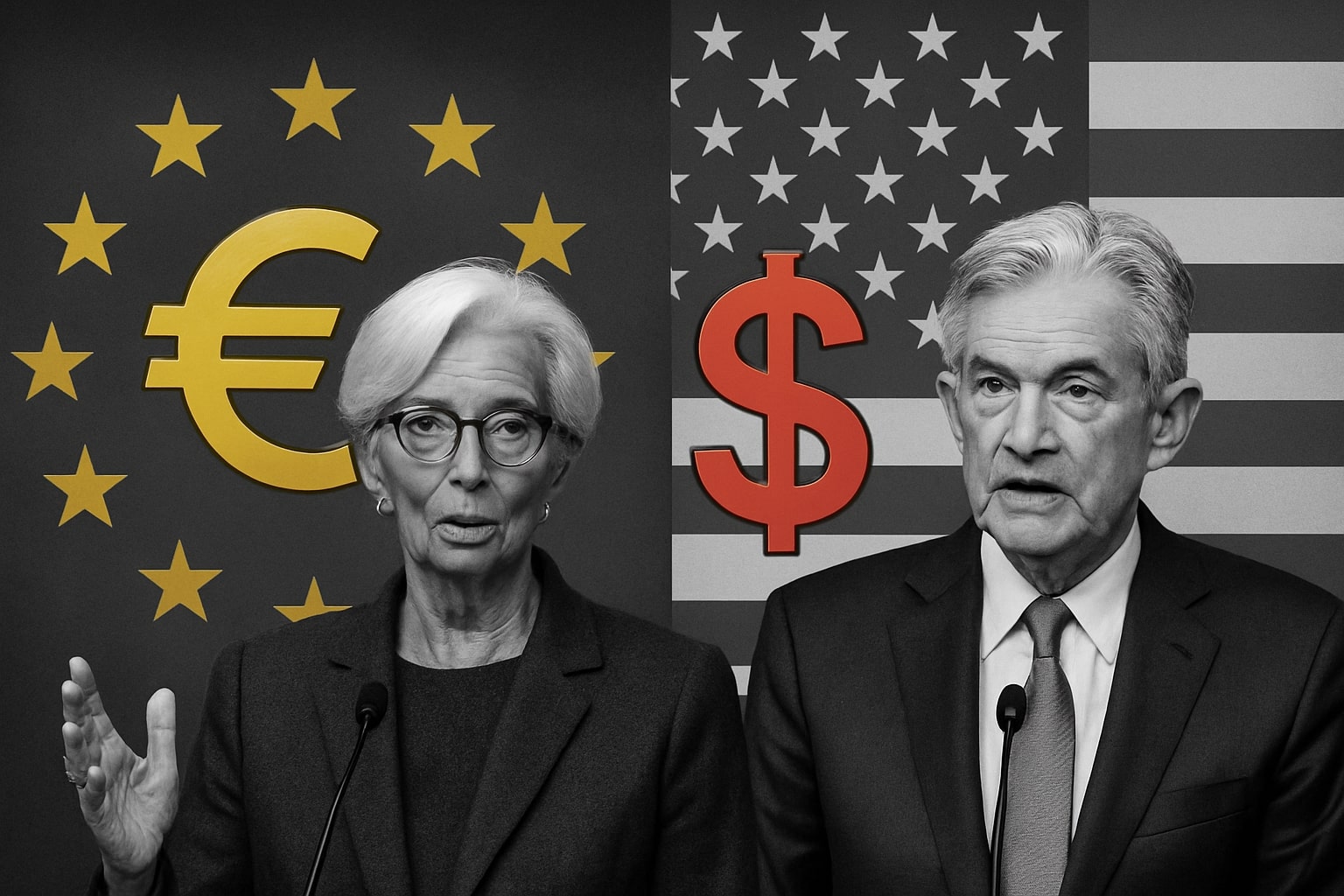
GBP/USD Price Forecast: Pound Steadies at 1.3075 as Traders Brace for UK Budget, £116.8B Deficit, and December BoE Cut
Sterling remains firm above 1.30 despite weak retail data and soaring fiscal deficit as traders anticipate a cautious Autumn Budget and potential rate cuts from the Bank of England | That's TradingNEWS
Sterling Stabilizes Around 1.3075 as Fiscal Deficit, Weak Data, and Dollar Strength Create a Narrow Trading Range
GBP/USD Trades Near 1.3075 With Traders Waiting for Fiscal Clarity
The GBP/USD pair continues to hover near 1.3075, recovering repeatedly from dips below the 1.30 threshold despite persistent headwinds in both fiscal and macroeconomic data. Over the past week, the pair traded between 1.3060 and 1.3155, revealing tight liquidity and cautious sentiment ahead of the UK Autumn Budget on November 26. The British pound remains constrained by concerns over stagnant growth, sticky inflation, and expanding government borrowing, while the U.S. dollar (USD) stays firm on stronger yields and resilient consumption data.
The market’s focal point is the Bank of England’s December 18 policy meeting, where traders are pricing a 25-basis-point rate cut, followed by another by mid-2026. Yet, recent comments from MPC members suggest hesitation to ease prematurely given inflation still trending above 3.9%, well above target.
Fiscal Stress Mounts as UK Deficit Swells to £116.8 Billion
Fresh Treasury figures show the UK government borrowing requirement narrowed to £17.4 billion in October, below last year’s £19.2 billion, but still £2.2 billion higher than market forecasts. For the fiscal year so far, borrowing totals £116.8 billion, nearly £10 billion above the Office for National Statistics (ONS) projections.
Markets fear that Chancellor Rachel Reeves has limited fiscal room to stimulate growth without unsettling gilt markets. The growing gap between fiscal spending and tax revenue is already steepening the gilt yield curve — 10-year gilts yield 4.24%, up from 3.82% a month ago — a move that tightens domestic financial conditions and caps Sterling’s upside potential.
Weak Retail Sales and PMI Data Reinforce Economic Fragility
UK retail sales volumes declined 1.1% in October, the sharpest fall since March, compared with consensus expectations of a 0.1% decline. Excluding gasoline, the drop was 1.0%, confirming that real consumer activity is eroding under higher borrowing costs. Annual growth slowed to 0.2%, underlining weak household spending power.
The composite PMI index slipped to 50.5 from 52.3, marking a seven-month low. The services PMI fell below expectations, while manufacturing edged slightly higher at 50.1, its first expansion in over a year. Still, slower growth in output charges — now at a five-year low — signals disinflationary momentum is underway.
Investor Sentiment Split Between Fiscal Pessimism and Dollar Strength
Despite the gloom in UK data, Sterling’s resilience comes from risk sentiment dynamics. Equities fell globally last week — the S&P 500 reversed gains after Nvidia’s (NASDAQ:NVDA) pullback triggered a rotation into bonds, while Bitcoin dropped 7% to a seven-month low. Yet the pound remained anchored near 1.31, indicating short-covering demand.
However, the U.S. dollar (DXY) index, holding near a six-month high at 106.2, continues to limit upside. The Federal Reserve’s hawkish FOMC minutes reaffirmed a slower disinflation path, and next week’s Core PCE data is expected at 2.8% YoY, keeping dollar demand elevated.
Fiscal “Black Hole” and Budget Expectations
The upcoming Autumn Budget could be the pivotal event for GBP/USD this quarter. Analysts estimate a fiscal “black hole” of roughly £20 billion, smaller than early projections of £30 billion, yet still enough to restrain government spending flexibility.
The Office for Budget Responsibility (OBR) has downgraded productivity growth forecasts again, projecting GDP expansion below 0.9% in 2026. Reeves faces pressure to either raise £6 billion through tax reforms or cut welfare and pension spending — both politically risky moves that could sway Sterling sentiment.
Market Pricing and Technical Outlook
The GBP/USD technical setup remains narrowly bullish above 1.30, where long-term support continues to hold. The 50-day moving average sits at 1.3038, while resistance caps the pair near 1.3155. Momentum indicators show an RSI reading of 54, suggesting modest upside momentum but no breakout potential unless fiscal guidance restores investor confidence.
Short-term traders are monitoring 1.3120 as intraday resistance, while the next target sits at 1.3225, corresponding with September highs. A sustained close below 1.2980 would reopen the path toward 1.2850 and reestablish a bearish trend channel.
Global Currency Context: GBP Strength vs. Peers
While GBP/USD consolidates, the EUR/GBP pair trades at 0.8789, down 0.30% on the week, as eurozone inflation softens and growth stagnates. Against the Japanese yen (GBP/JPY), Sterling rose to 188.12, supported by expectations of prolonged BOJ dovishness. The GBP/NZD pair, meanwhile, climbed 0.5% to 2.1050 as markets await the RBNZ’s rate decision.
Read More
-
SCHD ETF (NYSEARCA:SCHD) Rebounds to $27.10 — Quality Dividend Portfolio Targets 15–18% Annual Return
23.11.2025 · TradingNEWS ArchiveStocks
-
XRP ETFs Launch on NYSE: Franklin Templeton, Grayscale, and Bitwise Drive Institutional Wave
23.11.2025 · TradingNEWS ArchiveCrypto
-
Natural Gas Price Forecast (NG=F) Slips to $4.55 as U.S. LNG Expansion and Asian Imbalance Drive a Global Repricing Wave
23.11.2025 · TradingNEWS ArchiveCommodities
-
Stock Market Today - Wall Street Rebounds as NASDAQ:IXIC Climbs to 22,273; NVDA, AAPL, GOOGL, AMZN, WMT Lead Mixed Session
23.11.2025 · TradingNEWS ArchiveMarkets
-
USD/JPY Price Forecast - Dollar to Yen Nears ¥160 as Fiscal Pressures and U.S. Rate Gap Drive Yen to Breaking Point
23.11.2025 · TradingNEWS ArchiveForex
Policy Outlook and Forward Curve Dynamics
Forward markets now price a 60% probability of a BoE rate cut in December and another by June 2026. The SONIA curve has flattened sharply, implying a terminal rate of 4.50%, down from 5.25% currently. Meanwhile, U.S. 2-year Treasury yields remain near 4.89%, keeping the transatlantic yield spread deeply negative at -139 basis points, which structurally favors the USD.
However, the degree of “bad news” priced into Sterling is significant. Most of the fiscal drag, political uncertainty, and rate cut expectations are already embedded, which could create asymmetrical upside risk if the UK budget delivers credible fiscal restraint.
Final Outlook on GBP/USD
The balance of risk for GBP/USD leans cautiously bullish as long as 1.30 support holds and the UK Budget avoids major fiscal surprises. Market conviction remains thin, but technical stability, rate cut repricing, and reduced dollar momentum could keep the pair trading in the 1.3050–1.3200 corridor in the near term.



















